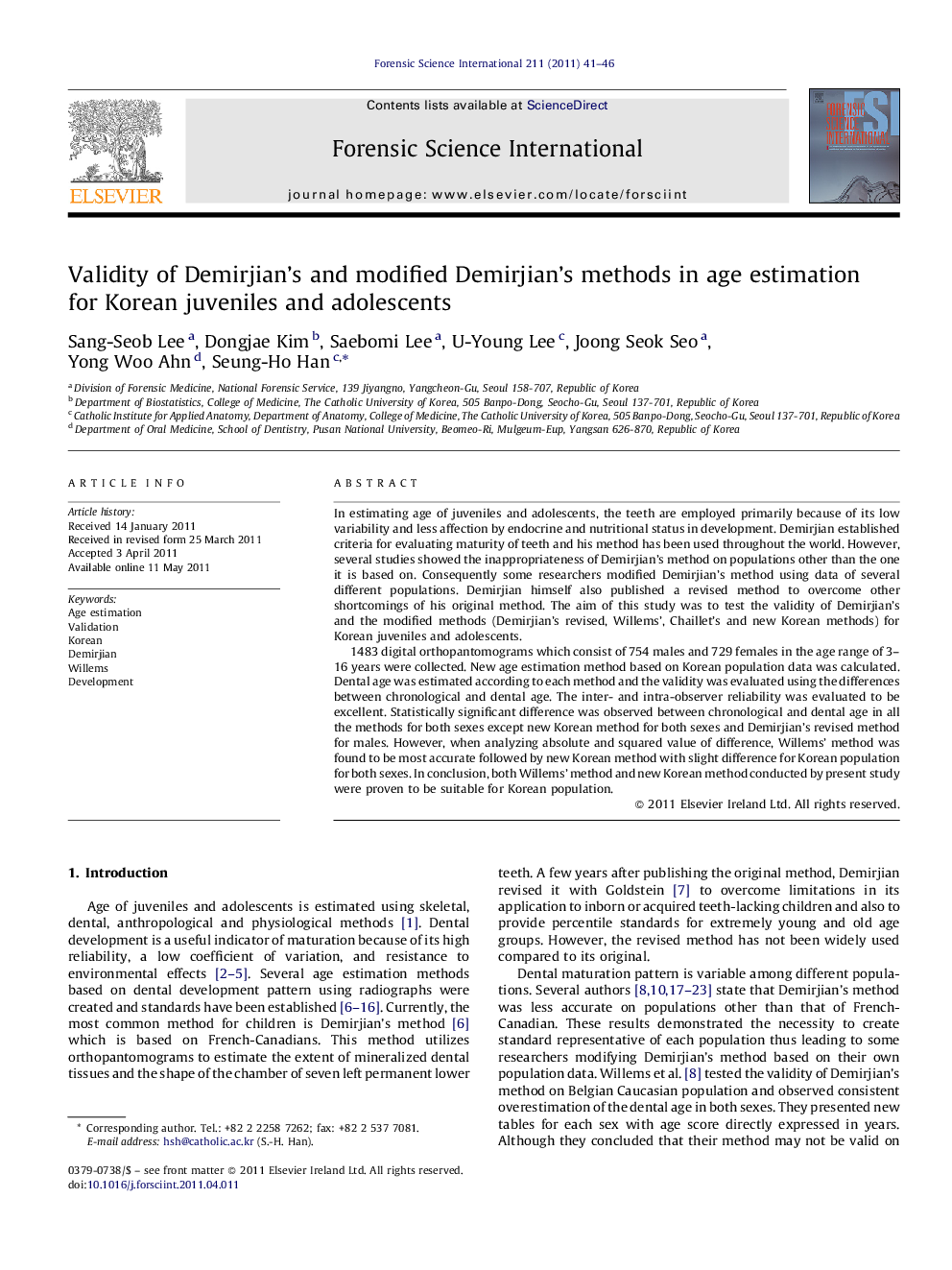| Article ID | Journal | Published Year | Pages | File Type |
|---|---|---|---|---|
| 96595 | Forensic Science International | 2011 | 6 Pages |
In estimating age of juveniles and adolescents, the teeth are employed primarily because of its low variability and less affection by endocrine and nutritional status in development. Demirjian established criteria for evaluating maturity of teeth and his method has been used throughout the world. However, several studies showed the inappropriateness of Demirjian's method on populations other than the one it is based on. Consequently some researchers modified Demirjian's method using data of several different populations. Demirjian himself also published a revised method to overcome other shortcomings of his original method. The aim of this study was to test the validity of Demirjian's and the modified methods (Demirjian's revised, Willems’, Chaillet's and new Korean methods) for Korean juveniles and adolescents.1483 digital orthopantomograms which consist of 754 males and 729 females in the age range of 3–16 years were collected. New age estimation method based on Korean population data was calculated. Dental age was estimated according to each method and the validity was evaluated using the differences between chronological and dental age. The inter- and intra-observer reliability was evaluated to be excellent. Statistically significant difference was observed between chronological and dental age in all the methods for both sexes except new Korean method for both sexes and Demirjian's revised method for males. However, when analyzing absolute and squared value of difference, Willems’ method was found to be most accurate followed by new Korean method with slight difference for Korean population for both sexes. In conclusion, both Willems’ method and new Korean method conducted by present study were proven to be suitable for Korean population.
